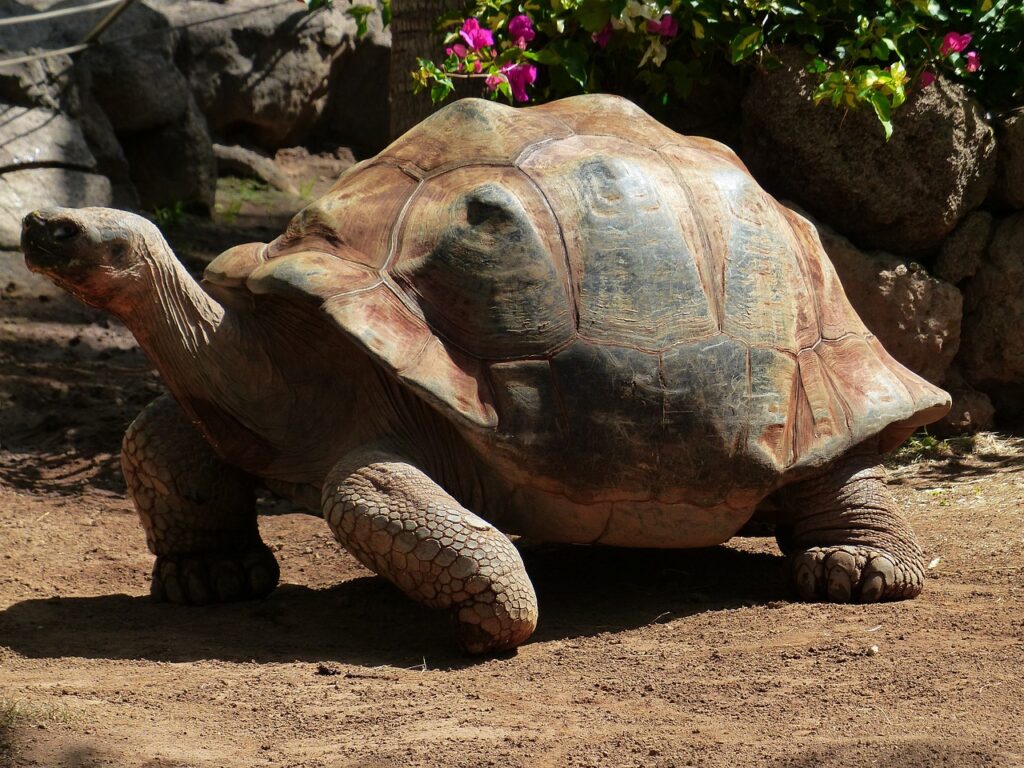Sulcata tortoises, also known as African spurred tortoises, occupy the Sahara Desert and sub-Saharan regions. These majestic animals are highly sought after by exotic pet traders for their impressive size and unique appearance. Unfortunately, this popularity has put them at risk of endangerment.

Capturing and trading for sulcata tortoises has decreased their numbers in the wild. Plus, human activities like agriculture and urbanization have taken away their habitats. This has caused concern for their future conservation status.
Organizations such as the International Union for Conservation of Nature (IUCN) have labeled sulcata tortoises as vulnerable on the IUCN Red List. This serves as a warning of the need to take conservation measures.
To stop illegal trade and protect sulcata tortoises, initiatives have been implemented. These are raising awareness about responsible pet ownership, enforcing stricter regulations on trade, and educating people about the effects of capturing animals from the wild.
Still, more work needs to be done to safeguard the future of sulcata tortoises. Government agencies, conservation organizations, and local communities must collaborate to preserve this species for future generations.
Fun Fact: National Geographic’s Animal Facts Database states that sulcata tortoises can live up to 70 years in captivity! Get ready to find out more about these slow yet powerful animals.
Key Takeaways
- Sulcata tortoises are not currently classified as endangered, but they are considered a vulnerable species.
- The main threats to Sulcata tortoises include habitat loss, illegal pet trade, and hunting.
- These tortoises are native to the Sahel region of Africa and are well-adapted to survive in arid environments.
- Sulcata tortoises are popular pets due to their large size and unique appearance, but they require specialized care and can live for several decades.
- Conservation efforts are being made to protect the natural habitats of Sulcata tortoises and regulate the pet trade to ensure their long-term survival.
Background on Sulcata Tortoises
Meet the Sulcata Tortoise, a species from the deserts of Sub-Saharan Africa. They have strong shells that protect them and help regulate their body temperature. These reptiles can reach up to 30 inches in length and weigh over 100 pounds! They have powerful legs and sharp claws that enable them to dig burrows, where they seek shelter from extreme temperatures and predators.
These tortoises have an incredible lifespan of over 100 years! Their slow growth rate and ability to conserve energy during times of scarcity are the reasons for their amazing longevity.
Winston is a Sulcata Tortoise who was found wandering alone far away from his natural habitat. Thankfully, he was rescued and now lives in a sanctuary dedicated to protecting endangered animals. His story reminds us of the importance of conservation and preserving these incredible creatures for future generations.
Current Population Status

The population status of Sulcata Tortoises is worrying. Let’s look at the facts. Wild populations are declining, while captive populations are increasing. This shows how habitat loss and illegal wildlife trade are affecting numbers. We must take action to protect them!
We can help wild populations by preventing habitat destruction and enforcing laws against wildlife trafficking. We can also create protected areas and promote sustainable land use practices.
Raising awareness about the importance of conserving these tortoises will gain public support for conservation efforts. Educating local communities about the ecological role of Sulcata Tortoises in their ecosystems can encourage responsibility towards their preservation.
By addressing these threats and implementing effective conservation strategies, we can help stabilize population decline of Sulcata Tortoises and ensure their long-term survival. It’s our duty to protect them – now and for future generations!
Threats to Sulcata Tortoises
Illegal wildlife trade and habitat loss are major threats to Sulcata Tortoises. These gentle giants are targeted for their meat, shells & as pets. Deforestation also puts them at risk.
Poachers capture them illegally, leading to a decline in their numbers. The black market highly values their shells, fuelling illegal wildlife trade.
Deforestation reduces their food sources & eliminates nesting sites, making it hard for them to survive. We can help by supporting orgs that combat illegal wildlife trade & promoting responsible pet ownership. Together, we can protect these magnificent creatures from extinction.
Conservation Efforts:
Saving Sulcata Tortoises is slow progress but worth the effort.
Conservation Efforts

Conservation efforts are key for the protection of endangered Sulcata Tortoises. These measures strive to guarantee the survival of these marvellous creatures and their habitats.
- Public Awareness: People need to be informed about the plight of Sulcata Tortoises. Educating people can help promote responsible actions that secure their environment.
- Habitat Restoration: Efforts are being made to revive and guard the natural habitats where Sulcata Tortoises live. This includes reforestation, erosion control, and getting rid of invasive species.
- Anti-Poaching Measures: To battle unlawful wildlife trade, anti-poaching units are actively working to stop the capture and sale of Sulcata Tortoises on the black market.
- Captive Breeding Programs: Institutions and organisations are participating in captive breeding programmes to raise the population of Sulcata Tortoises in captivity. This helps in maintaining genetic diversity and possibly reintroducing them into the wild.
- International Collaboration: Conservation initiatives for Sulcata Tortoises necessitate collaboration among various countries, making sure knowledge and resources are shared for successful protection and preservation.
Other strategies like habitat monitoring, disease management, and ecological behaviour research are also part of these initiatives. With joint efforts from individuals, organisations, and governments worldwide, there is hope for the long-term survival of these incredible tortoises.
A real-life example of the beneficial effect of conservation efforts on Sulcata Tortoises has recently come out. In one particular area where extensive habitat restoration was completed, specialists noticed an increase in tortoise sightings. The revived environment offered better food sources and nesting opportunities for these endangered animals. This success story further illustrates the value of conservation efforts in securing the future of Sulcata Tortoises. Prepare to be amazed by the facts about their endangered status!
Frequently Asked Questions
FAQs about the Endangered Status of Sulcata Tortoises:
Q: Are Sulcata Tortoises endangered?
A: Yes, Sulcata Tortoises are considered endangered.
Q: What factors have contributed to the declining Sulcata Tortoise population?
A: Habitat loss, illegal pet trade, and poaching are the major factors contributing to the declining population of Sulcata Tortoises.
Q: How can I help protect Sulcata Tortoises?
A: You can help protect Sulcata Tortoises by supporting conservation organizations, refraining from buying or selling them illegally, and spreading awareness about their endangered status.
Q: Are there any regulations in place for the protection of Sulcata Tortoises?
A: Yes, Sulcata Tortoises are protected under various international and national wildlife laws, and their trade is strictly regulated.
Q: Can I keep a Sulcata Tortoise as a pet?
A: While it is legal to keep Sulcata Tortoises as pets in some places, it is important to ensure they are obtained legally and that you can meet their specific care needs.
Q: Where can I learn more about Sulcata Tortoise conservation?
A: You can find more information about Sulcata Tortoise conservation through reputable conservation organizations and wildlife authorities.
Conclusion
Sulcata Tortoises, also known as African spurred tortoises, are in danger. Their numbers have been going down due to habitat loss and people taking them for pets. We need to save these majestic creatures to keep them around for future generations.
These tortoises come from the Sahel region of Africa. Despite their large size and strong look, they face many dangers in their natural habitats. Agriculture and urbanization are destroying their homes. That stops them from finding food and water.
Also, Sulcata Tortoises are taken from the wild to become exotic pets. This is not allowed, but it’s still happening. That takes away even more of them, and interrupts the way nature works.
We have to act now to protect them. Conservation projects, like making safe areas and helping the habitats, and spreading the word about buying pets responsibly can make a difference. International laws against taking wildlife and using nature in ways that don’t hurt it are also important.
We must act quickly to save these amazing creatures. By supporting conservation groups, helping create better laws against taking wildlife, and raising awareness about Sulcata Tortoises, we can make a change. Let’s work together to make sure these graceful reptiles stay on this planet for a long time.
References




